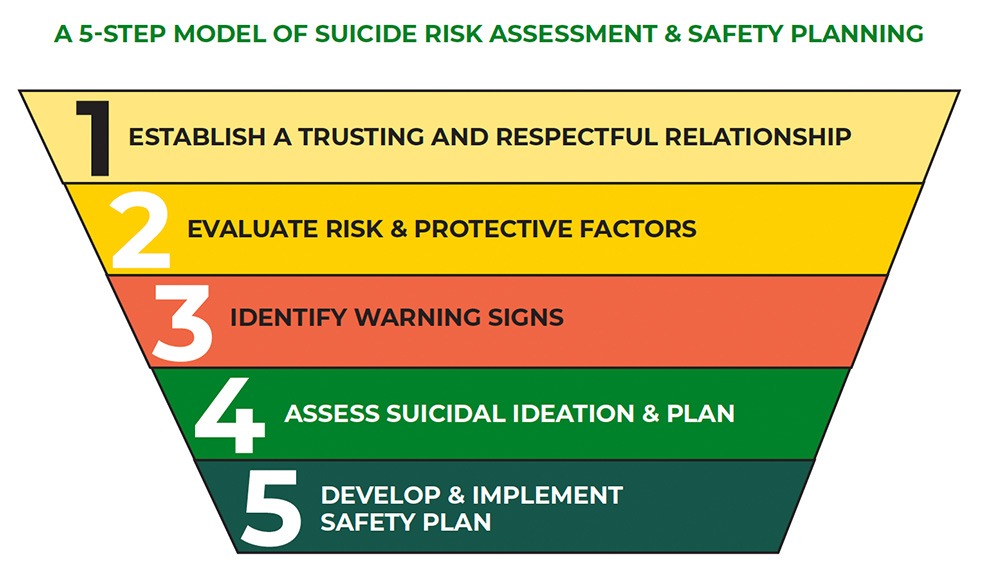Learning Outcomes
This module on crisis intervention aims to equip individuals with the knowledge and skills to identify suicide risk and intervene in cases of imminent self-harm. It covers a comprehensive and collaborative 5-step approach to assessing those in need, by evaluating risk and protective factors, identifying warning signs, and determining the seriousness of suicidal ideation and planning. The last step is the creation and implementation of a safety plan to support the person in crisis, depending on their level of risk. The module integrates practical narratives and sample questions to enhance understanding and application in real-world scenarios.
Learning Outcomes
- Appreciate the importance of a methodical, evidence-based suicide assessment
- Recall the steps to assess and ensure the safety of individuals at risk of suicide.
- Recognize key risk factors, protective factors and warning signs associated with suicidal behaviour.
- Through role play:
- Apply a 5-step suicide assessment process to be prepared for real-world events
- Practice skills to effectively and empathically communicate with someone at risk
- Apply skills to evaluate suicidal ideation and suicide plans
- Prepare a detailed safety plan
The 5-step model of Suicide Risk Assessment & Safety Planning guides Gatekeepers through a methodical approach to gathering information about someone in crisis, and determining the most effective course of action. The approach is described in sequential steps for sake of simplicity and clarity. Although the steps are described in a linear progression, know that interacting with humans in crisis does not follow a sequential order. Be prepared to move back and forth between steps, depending on the circumstances and the individual you are supporting.

Through this approach, you will gather and consider information from many angles at each step to form a comprehensive picture of the person at risk. In the case study activity that concludes this module, you will work with a 2-page form to capture important details at each step step of the process. The completed form provides a big-picture understanding of the Gatekeeper’s interaction with a person in crisis as it provides an at-a-glace understanding of the many complex ingredients of their crisis.
As a result of considering relevant details, it enables one to stand back from a crisis and answer the questions:
- Is this person suicidal?
- Does the person have a specific plan?
- What do we as Gatekeepers need to do to provide appropriate support and effective referral?
